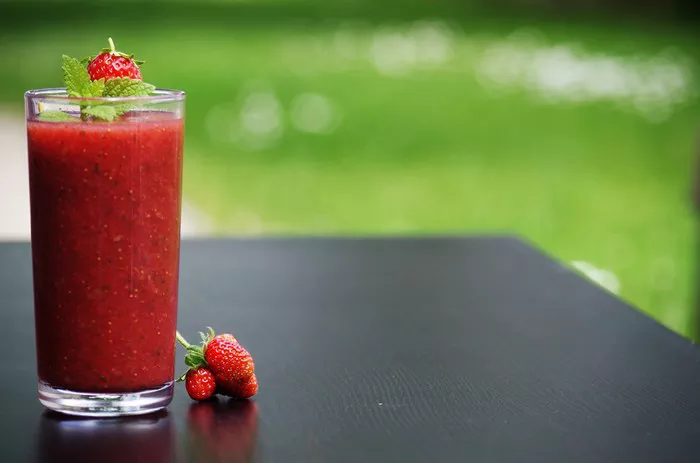Chinese cuisine boasts a rich tapestry of flavors and techniques, with each region offering unique culinary traditions. Among these, pork ribs soup stands out as a comforting and nourishing dish enjoyed throughout China and beyond. This article delves into the art of preparing Chinese style pork ribs soup, guiding you through essential ingredients, preparation methods, and variations that cater to different preferences.
Understanding the Foundation: Key Ingredients and Their Roles
1. Pork Ribs: Selecting the right cut of pork ribs is crucial. Traditionally, spare ribs or baby back ribs are used for their tender texture and rich flavor. Some prefer ribs with a bit of fat for added richness.
2. Aromatic Vegetables: Garlic, ginger, and green onions form the aromatic base of the soup. These ingredients not only impart depth of flavor but also provide subtle undertones that complement the pork.
3. Herbal Elements: Chinese cuisine often incorporates herbs for both flavor and medicinal purposes. Common choices include dried shiitake mushrooms, goji berries, and Chinese yam, each contributing distinct flavors and health benefits.
4. Broth or Stock: The foundation of any soup lies in its broth. For pork ribs soup, a clear and flavorful broth is essential. Homemade chicken or pork broth is preferred, but high-quality store-bought options can also be used.
5. Seasoning: Light soy sauce, rice wine or Shaoxing wine, and a touch of salt are used to season the soup. These ingredients balance the flavors and enhance the natural sweetness of the pork.
Step-by-Step Preparation: From Raw Ingredients to Aromatic Broth
1. Preparing the Pork Ribs
Begin by rinsing the pork ribs under cold water to remove any bone fragments or debris. Pat them dry with paper towels and then blanch them in boiling water for a few minutes. This step helps to remove impurities and ensures a cleaner-tasting broth. Once blanched, rinse the ribs again under cold water and set them aside.
2. Infusing Aromatics
In a large pot or Dutch oven, heat a small amount of oil over medium heat. Add crushed garlic cloves, sliced ginger, and chopped green onions (both white and green parts). Sauté until aromatic, taking care not to burn the garlic. This aromatic base forms the flavor foundation of the soup.
3. Adding the Pork Ribs and Broth
Add the blanched pork ribs to the pot and stir-fry briefly to coat them with the aromatics. Pour in enough broth or stock to cover the ribs completely. Bring the mixture to a boil, then reduce the heat to low and simmer gently, uncovered, for at least 1.5 to 2 hours. Skim off any impurities that rise to the surface during cooking.
4. Enhancing Flavor with Herbs and Seasonings
About 30 minutes before the soup is done, add dried shiitake mushrooms (rehydrated if dried), goji berries, and Chinese yam (cut into chunks). These ingredients infuse the soup with herbal flavors and add a subtle sweetness. Season the soup with light soy sauce, a splash of rice wine or Shaoxing wine, and a pinch of salt to taste. Adjust the seasoning according to your preference.
SEE ALSO: How to Cook Pork Tenderloin Chinese Style
5. Simmering to Perfection
Continue to simmer the soup gently until the pork ribs are tender and the flavors have melded beautifully. The longer you simmer, the more depth of flavor you’ll achieve. The soup should be clear and aromatic, with the pork ribs tender but not falling off the bone.
Serving and Presentation: Traditional Accompaniments and Variations
1. Traditional Accompaniments: Chinese style pork ribs soup is often served piping hot in bowls, garnished with fresh cilantro or green onions for added freshness. It pairs wonderfully with steamed white rice or noodles on the side.
2. Variations: Depending on regional preferences, you can customize the soup with additional ingredients such as corn on the cob, winter melon, or even a hint of star anise for a more complex flavor profile. Some variations include a touch of spicy heat with dried chili peppers or Sichuan peppercorns.
Health Benefits and Culinary Delight
Beyond its delicious taste, Chinese style pork ribs soup offers various health benefits. It is rich in collagen, which supports joint health and promotes glowing skin. The herbs used often have medicinal properties, such as boosting immunity or aiding digestion, making this soup a wholesome choice for wellness.
Conclusion
Mastering Chinese style pork ribs soup requires patience and attention to detail, but the results are well worth the effort. Whether you’re preparing it for a comforting family dinner or exploring new culinary horizons, this dish embodies the essence of Chinese cooking—balance, harmony, and a celebration of natural flavors.
By following the steps outlined in this article and experimenting with different herbs and seasonings, you’ll not only create a delicious soup but also embark on a culinary journey that connects you with centuries-old traditions of Chinese cuisine. So gather your ingredients, sharpen your knives, and savor the warmth and richness of Chinese style pork ribs soup—one bowl at a time.
Related Topics:



















